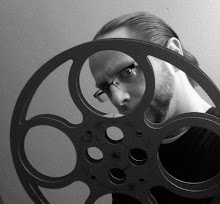When director Terrence Malick returned from his self-imposed
20-year hiatus, he brought with him the most unconventional, yet earnest style
of filmmaking. Elemental things like scripts, dialogue, or point-to-point
narrative structure were discarded in favor of an abstract style involving
random images and meandering narration which never directly tells us what the
movie is really about, leaving most of the work to the audience. Malick is an
experimenter, and in SONG TO SONG pushes the limits more than ever.
Set in the modern-day Austin, Texas music festival scene,
Faye (Rooney Mara), a struggling bass-player, gets stuck in a love triangle
between BV (Ryan Gosling), an up-and-coming songwriter, and Cook (Michael
Fassbender), a rich and successful musician and producer. When the triangle
falls apart, the three go from lover-to-lover; Faye experiments with another
woman, while BV has an affair with an older woman (Cate Blanchett), and Cook
with a waitress (Natalie Portman).
From a storytelling perspective, SONG TO SONG has more of a
shape than Malick’s past few films. The film follows the beginnings of the love
triangle, and once that is broken, splits off into three stories following the
characters as they go their separate ways…which eventually cross paths again.
There are several sub-plots at work as well; ranging from Faye’s struggles as a
musician, Cook’s vast wealth getting the best of him, RV’s mother (Linda Emond)
managing to control who he dates, and a battle between RV and Cook over
royalties. These are troubled characters who wander from one mess to another,
with most of the messes of their own making.
Wandering around randomly sums up the style of the
presentation. The film is assembled of casual visuals of characters dancing
around or goofing around on beaches, empty apartments, backstage of a concert,
or in a bedroom. Dialogue is at an absolute minimum, and there are only a handful
of scenes with actual back-and-forth between actors. Most of the spoken words
come by way of narration, in which characters wax
philosophical about what they’re feeling or asking questions that have no
answers. It’s Malick’s usual style, and requires a ton of patience and thought
to plow through and dissect…but that’s assuming there actually is meaning
behind the thick fog that he has built. Things get really confusing towards the
back end, when the film either jumps ahead or back in time (good luck figuring out what direction), which is
jarring and confusing with no hint to help us along. It’s as maddening as it is
confounding.
On the technical side of things, SONG TO SONG is packed with
some bizarre editing choices. The little dialogue that exists is barely audible
and we find ourselves leaning forward in our chairs trying to hear what the
hell characters are saying. Maybe Malick is going for feelings, but as the film
plays out it’s an annoyance. There are also random cuts to black which happen
at the oddest times which makes us think the projector bulb just went out, and
a wacko black-and-white vintage film sequence is a head-shaker. Scenes bounce
around to random locations without explanation or setup (there must be 50 empty
apartments we visit), and the overall cutting is dizzying. Emmanuel Lubezki’s
cinematography is gorgeous.
It's tough to judge the acting as no one really acts and
instead flop around every location. Rooney Mara gets the most screentime and
probably the most spoken words, while Michael Fassbender acts like an eccentric
weirdo for most of the time. Fans of heartthrob Ryan Gosling will likely be
disappointed in what they get (or don’t get) from him, and Natalie Portman gets
the most heavy-lifting as the most emotionally unstable of the cast. Cate
Blanchett doesn’t seem to speak more than six words. Other random (there’s that
word again) cameos include Val Kilmer, Patti Smith, Holly Hunter, Iggy Pop, The
Red Hot Chili Peppers, and a large assortment of musicians for three seconds at
a time. Scenes were filmed with Christian Bale, Haley Bennett, and Benicio del
Toro but were completely cut.
There’s not much that really happens in SONG TO SONG, and
the unhurried pacing makes the 129-minute runtime feel like 600; don’t be
surprised if the film picks up the nickname of SLOG TO SLOG. On top of
everything else, followers of Malick will (and should) realize that this film
flies very close, if not exactly the same flight pattern as his own KNIGHT OF
CUPS (2015)…and it’s not much of a stretch to say he made the same movie again with
a different setting. Malick gets points here for ambition and his refusal to
blend in with mainstream Hollywood, but loses more for being confusing and
distant. This is experimental film at its oddest, yet earnest.
BOTTOM LINE: Rent it


No comments:
Post a Comment
A few rules:
1. Personal attacks not tolerated.
2. Haters welcome, if you can justify it.
3. Swearing is goddamn OK.